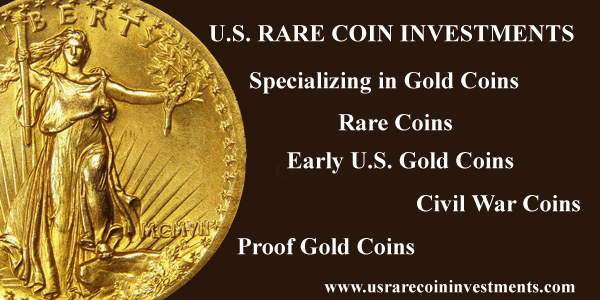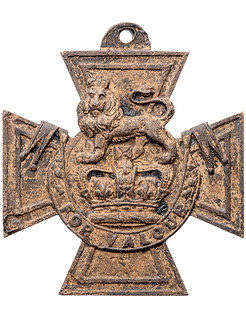
PREV ARTICLE
NEXT ARTICLE
FULL ISSUE
PREV FULL ISSUE
VICTORIA CROSS MEDAL FOUND IN THAMES RIVEROne of the earliest Victoria Cross medals issued has been discovered in the Thames River. -Editor
Tobias Neto, a ‘mudlark' – one of the amateur treasure hunters who search the mud of the Thames when the tide is out – discovered the rare medal in December 2015. He reported the find to the Portable Antiquities Scheme and research began into who the medal could have belonged to. “It was covered in mud. I kept it and carried on detecting. Only when I got home did I realise I had a VC medal in my hands - I could read the writing ‘For Valour' below the crown. “Eventually I noticed the date on the reverse: 5 NOV 1854." The date has allowed Tobias and researchers from the Museum of London to narrow down candidates for the medal's owner. The medal was awarded for actions in the Battle of Inkerman during the Crimean War. The battle was part of the Siege of Sevastopol, a decisive allied victory in the Crimean War. A number of VC medals were awarded for the Battle of Inkerman, and the whereabouts of two of those medals are recorded as unknown. Two men are thought to be the possible recipients of the medal: Private John McDermond, from the 47th (the Lancashire) Regiment and Private John Byrne from the 68th (Durham) Light Infantry. The Victoria Cross is the United Kingdom's highest award for valour. It was instituted by Queen Victoria in 1856 to recognise “those officers or men who have served Us in the presence of the Enemy and shall then have performed some signal act of valour or devotion to their country.” There have been 1,355 recipients of the Victoria Cross since its institution. Tradition has it that all the Crosses are struck from metal derived from Russian cannon captured at Sevastopol, although recent tests suggest the metal used is Chinese in origin, and not Russian. But how this particular medal ended up at the bottom of the Thames is another mystery which is yet to be solved. If you're scratching your head about the date like I was, it turns out that the act was backdated to 1854 to include events
during the Crimean War. -Editor
For more information, see: To read the complete article, see: Here's another article with more images from the finder's hometown newspaper. -Editor
 Putney resident and member of PutneySW15.com Tobias Neto has enjoyed mudlarking for the past two years and take his metal detector to the foreshore three to five times a week, depending on his schedule and, of course, the tides. He told this website: "It's a hobby that keeps me healthy and teaches me a whole new world of history. On the 17th December 2015, whilst detecting on my usual area (I prefer not to disclose the area ) on the Thames foreshore, I came across what looked at first like a large brooch or medal, about 3 inches deep. It was covered in mud. I kept it and carried on detecting. Only when I got home did I realise I had a VC medal in my hands ( I could read the writing "FOR VALOUR" below the crown). Eventually I noticed the date on the reverse: 5 NOV 1854." Tobias had already made some interesting finds: "Previously I had found important historical artifacts such as a 13th century Pilgrim badge, a syringe to treat syphilis from the 18th century, Elizabeth I, Charles I, & II hammered coins, Roman coins and even a Quarter Stater Celtic coin dated 40 AD." But the VC tops the lot. When he reported his find, he was told by the Museum of London's Finds Liaison Officer, Ms Kate Sumnall;"Do you realise you have the find of a lifetime? You might be the only person in the world to have found a VC medal. " Tobias' research began and whilst sixteen Victoria Crosses were awarded to British soldiers on the 5th November 1854 after the Battle of Inkerman (a battle fought during the Crimean War between the allied armies of Britain, France and Ottoman Empire against the Imperial Russian Army), he discovered that there are only two names of unknown VC medals linked to the Crimean War in 1854; these were Sergeant John Byrne, originally from Castlecomer, County Kilkenny, Ireland and Private John McDermond, originally from Clackmannan, Scotland. The other fourteen are accounted for in museums and private collections.
"I discovered Sergeant John Byrne's burial place and decided to visit his headstone at the St Woolo's Cemetery, Newport, Wales. He's been from day one my number one suspect and that was the main reason of my visit. I've always thought the medal belonged to him." At the time of the battle John Byrne was a private and twenty two years old, he was awarded the medal for his actions when his regiment was ordered to retire, he went back towards the enemy, and, at the risk of his own life, brought in a wounded soldier, under fire. The reason the ownership is not known is that although the date of the battle is on the reverse of the cross the name of the recipient would be engraved on the suspender bar which is missing - Tobias continued to search for this in the mud of the Thames. Tobias said: "I'm very grateful to the MoL support with the research. Now the VC medal will be on display at the MoL from Thursday 10th November 2016 for 6 weeks, some 160 years since when it was first created by Queen Victoria in 1856." "MoL" is the Museum of London. -Editor
To read the complete article, see:  Wayne Homren, Editor The Numismatic Bibliomania Society is a non-profit organization promoting numismatic literature. See our web site at coinbooks.org. To submit items for publication in The E-Sylum, write to the Editor at this address: whomren@gmail.com To subscribe go to: https://my.binhost.com/lists/listinfo/esylum All Rights Reserved. NBS Home Page Contact the NBS webmaster 
|

